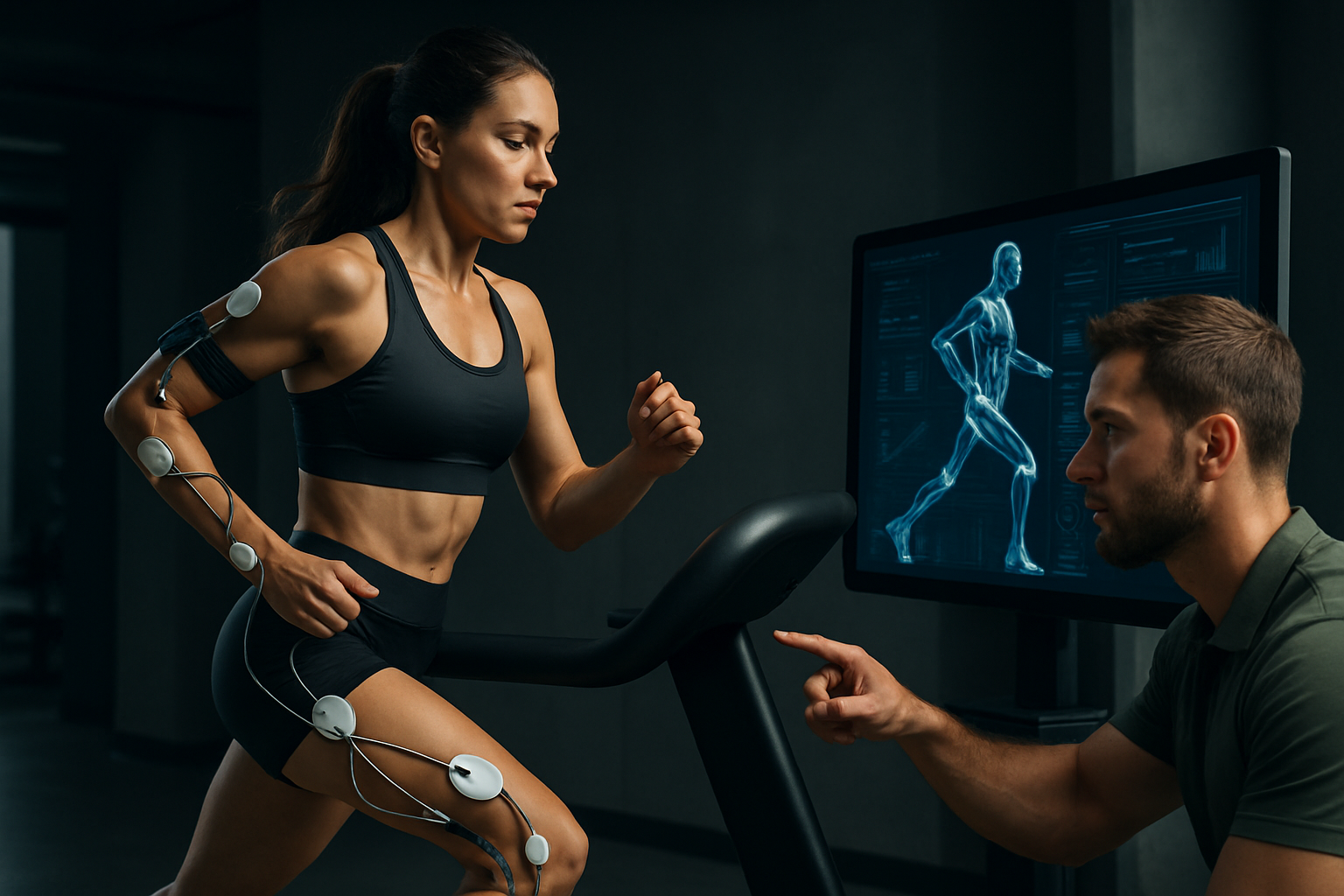Bioelectric Fitness: The Future of Personalized Exercise
In an era where technology seamlessly integrates with every aspect of our lives, the fitness industry is on the brink of a revolutionary transformation. Bioelectric fitness, a cutting-edge approach to exercise, is poised to redefine how we understand and optimize our workout routines. This innovative method harnesses the body's natural electrical signals to create highly personalized and efficient training programs. By tapping into the intricate network of bioelectrical impulses that govern our muscular movements, bioelectric fitness promises to unlock new levels of performance, recovery, and overall well-being. As we delve into this fascinating frontier of exercise science, we'll explore how this technology works, its potential benefits, and the ways it could reshape the future of fitness for both elite athletes and everyday enthusiasts alike.

The process begins with strategically placed electrodes that capture the body’s electrical activity. These signals are then processed through sophisticated software that creates a comprehensive map of an individual’s unique physiological responses to different exercises. This data is used to tailor workout intensity, duration, and technique to maximize results while minimizing the risk of injury or overtraining.
Personalization: The Key to Bioelectric Fitness
One of the most significant advantages of bioelectric fitness is its ability to offer unprecedented levels of personalization. Traditional fitness programs often rely on generalized approaches that may not account for individual differences in physiology, fitness levels, or recovery needs. Bioelectric systems, however, can adapt in real-time to an individual’s changing condition.
For example, if the system detects signs of muscular fatigue during a workout, it can automatically adjust the exercise intensity or suggest a shift to a different muscle group. This dynamic responsiveness ensures that each session is optimized for the user’s current state, leading to more efficient and effective workouts.
Moreover, bioelectric fitness can track progress over time with extreme precision. By monitoring changes in muscle activation patterns and overall electrical activity, these systems can provide detailed insights into improvements in strength, endurance, and neuromuscular coordination.
Applications in Professional Sports and Rehabilitation
The potential applications of bioelectric fitness extend far beyond the average gym-goer. In professional sports, where marginal gains can make the difference between victory and defeat, this technology offers a new frontier in performance optimization. Athletes can use bioelectric feedback to refine their technique, identify areas of weakness, and tailor their training to the specific demands of their sport.
In the field of rehabilitation, bioelectric fitness shows tremendous promise. For individuals recovering from injuries or surgeries, these systems can provide precise guidance on safe and effective exercise progressions. By monitoring muscle activation patterns, therapists can ensure that patients are engaging the correct muscles and avoiding compensatory movements that could hinder recovery.
Integrating Bioelectric Fitness into Daily Life
As bioelectric fitness technology becomes more accessible, we’re likely to see its integration into various aspects of daily life. Wearable devices equipped with bioelectric sensors could offer continuous monitoring and feedback throughout the day, not just during workout sessions. This could lead to more holistic approaches to fitness that consider factors such as posture, movement patterns during everyday activities, and even stress levels.
Imagine a future where your smartwatch not only tracks your steps and heart rate but also provides real-time suggestions for micro-exercises based on your current muscle activation patterns and energy levels. This seamless integration of bioelectric fitness into daily routines could revolutionize how we approach overall health and well-being.
Challenges and Ethical Considerations
While the potential of bioelectric fitness is undoubtedly exciting, it’s important to consider the challenges and ethical implications of this technology. Privacy concerns are paramount, as bioelectric data provides an incredibly detailed and personal physiological profile. Ensuring the security and responsible use of this data will be crucial as the technology becomes more widespread.
There’s also the question of accessibility. As with many cutting-edge technologies, bioelectric fitness systems are likely to be expensive initially, potentially creating a divide between those who can afford this personalized approach and those who cannot. Addressing these disparities will be essential to ensure that the benefits of bioelectric fitness are available to a wide range of individuals.
The Future Landscape of Fitness
As bioelectric fitness continues to evolve, we can expect to see its influence ripple through various sectors of the health and wellness industry. Gyms of the future may feature equipment that automatically adjusts based on an individual’s bioelectric profile. Personal trainers could use bioelectric data to create hyper-personalized workout plans that adapt in real-time to their clients’ progress.
The integration of bioelectric fitness with other emerging technologies, such as artificial intelligence and virtual reality, opens up even more possibilities. Imagine virtual workout environments that respond not just to your movements but to your body’s electrical signals, creating immersive and highly effective training experiences.
In conclusion, bioelectric fitness represents a paradigm shift in how we approach exercise and physical well-being. By tapping into the body’s intrinsic electrical systems, this technology offers a level of personalization and precision that was previously unimaginable. As we stand on the cusp of this fitness revolution, it’s clear that bioelectric approaches will play a significant role in shaping the future of health and performance optimization. While challenges remain, the potential benefits of this innovative technology make it an exciting frontier in the ever-evolving world of fitness and wellness.





